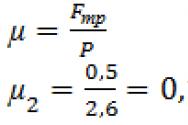What are the two lightest chemical elements? The most amazing substances. The most abundant element in the Universe
The universe hides many secrets in its depths. For a long time, people have sought to unravel as many of them as possible, and, despite the fact that this does not always work out, science is moving forward by leaps and bounds, allowing us to learn more and more about our origins. So, for example, many will be interested in what is the most common one in the Universe. Most people will immediately think of water, and they will be partly right, because the most common element is hydrogen.
The most abundant element in the Universe
It is extremely rare for people to encounter hydrogen in its pure form. However, in nature it is very often found in association with other elements. For example, when it reacts with oxygen, hydrogen turns into water. And this is far from the only compound that includes this element; it is found everywhere not only on our planet, but also in space.
How did the Earth appear?
Many millions of years ago, hydrogen, without exaggeration, became the building material for the entire Universe. After all, after the big bang, which became the first stage of the creation of the world, nothing existed except this element. elementary because it consists of only one atom. Over time, the most abundant element in the universe began to form clouds, which later became stars. And already inside them reactions took place, as a result of which new, more complex elements appeared, giving rise to planets.
Hydrogen
This element accounts for about 92% of the atoms in the Universe. But it is found not only in stars, interstellar gas, but also in common elements on our planet. Most often it exists in a bound form, and the most common compound is, of course, water.

In addition, hydrogen is part of a number of carbon compounds that form oil and natural gas. 
Conclusion
Despite the fact that it is the most common element throughout the world, surprisingly, it can be dangerous for humans because it sometimes catches fire when it reacts with air. To understand how important a role hydrogen played in the creation of the Universe, it is enough to realize that without it nothing living would have appeared on Earth.
The most common
Lithosphere. Oxygen (O), 46.60% by weight. Discovered in 1771 by Karl Scheele (Sweden).
Atmosphere. Nitrogen (N), 78.09% by volume, 75.52% by mass. Discovered in 1772 by Rutherford (Great Britain).
Universe. Hydrogen (H), 90% of the total substance. Discovered in 1776 by Henry Cavendish (Great Britain).
Rarest (out of 94)
Lithosphere.
Astatine (At): 0.16 g in the earth's crust. Opened in 1940 by Corson (USA) and employees. The naturally occurring isotope astatine 215 (215At) (discovered in 1943 by B. Karlik and T. Bernert, Austria) exists in quantities of only 4.5 nanograms.
Atmosphere.
Radon (Rn): only 2.4 kg (6·10–20 volume of one part per million). Opened in 1900 by Dorn (Germany). The concentration of this radioactive gas in areas of granite rock deposits is believed to have caused a number of cancers. The total mass of radon found in the earth’s crust, from which atmospheric gas reserves are replenished, is 160 tons.
The easiest
Gas:
Hydrogen (H) has a density of 0.00008989 g/cm3 at a temperature of 0°C and a pressure of 1 atm. Discovered in 1776 by Cavendish (Great Britain).
Metal.
Lithium (Li), with a density of 0.5334 g/cm3, is the lightest of all solids. Discovered in 1817 by Arfvedson (Sweden).
Maximum Density
Osmium (Os), with a density of 22.59 g/cm3, is the heaviest of all solids. Discovered in 1804 by Tennant (Great Britain).
Heaviest gas
It is radon (Rn), the density of which is 0.01005 g/cm3 at 0°C. Opened in 1900 by Dorn (Germany).
Last received
Element 108, or unniloctium (Uno). This provisional name is given by the International Union of Pure and Applied Chemistry (IUPAC). Obtained in April 1984 by G. Münzenberg and coworkers (West Germany), who observed only 3 atoms of this element in the laboratory of the Society for Heavy Ion Research in Darmstadt. In June of the same year, a message appeared that this element was also obtained by Yu.Ts. Oganesyan and collaborators at the Joint Institute for Nuclear Research, Dubna, USSR.
A single unnilenium atom (Une) was obtained by bombarding bismuth with iron ions in the laboratory of the Heavy Ion Research Society, Darmstadt, West Germany, on August 29, 1982. It has the highest atomic number (element 109) and the highest atomic mass (266) . According to the most preliminary data, Soviet scientists observed the formation of an isotope of element 110 with an atomic mass of 272 (preliminary name - ununnilium (Uun)).
The cleanest
Helium-4 (4He), obtained in April 1978 by P.V. McLintock of Lancaster University, USA, has less than 2 parts of impurities per 1015 parts of volume.
The hardest
Carbon (C). In its allotropic form, diamond has a Knoop hardness of 8400. Known since prehistoric times.
Dearest
Californian (Cf) was sold in 1970 at a price of $10 per microgram. Opened in 1950 by Seaborg (USA) and employees.
The most flexible
Gold (Au). From 1 g you can draw a wire 2.4 km long. Known since 3000 BC.
Highest tensile strength
Boron (B) – 5.7 GPa. Discovered in 1808 by Gay-Lussac and Thénard (France) and H. Davy (Great Britain).
Melting/boiling point
Lowest.
Among non-metals, helium-4 (4He) has the lowest melting point -272.375°C at a pressure of 24.985 atm and the lowest boiling point -268.928°C. Helium was discovered in 1868 by Lockyer (Great Britain) and Jansen (France). Monatomic hydrogen (H) must be an incompressible superfluid gas. Among metals, the corresponding parameters for mercury (Hg) are –38.836°C (melting point) and 356.661°C (boiling point).
The tallest.
Among non-metals, the highest melting point and boiling point is carbon (C), known since prehistoric times: 530°C and 3870°C. However, it seems controversial that graphite is stable at high temperatures. Transitioning from a solid to a vapor state at 3720°C, graphite can be obtained as a liquid at a pressure of 100 atm and a temperature of 4730°C. Among metals, the corresponding parameters for tungsten (W) are 3420°C (melting point) and 5860°C (boiling point). Opened in 1783 by H.H. and F. d'Eluyarami (Spain).
Isotopes
Largest number of isotopes(36 each) for xenon (Xe), discovered in 1898 by Ramsay and Travers (Great Britain), and for cesium (Cs), discovered in 1860 by Bunsen and Kirchhoff (Germany). Hydrogen (H) has the smallest amount (3: protium, deuterium and tritium), discovered in 1776 by Cavendish (Great Britain).
The most stable
Tellurium-128 (128Te), according to double beta decay, has a half-life of 1.5 1024 years. Tellurium (Te) was discovered in 1782 by Müller von Reichenstein (Austria). The 128Te isotope was first discovered in its natural state in 1924 by F. Aston (Great Britain). Data on its superstability were again confirmed in 1968 by studies by E. Alexander Jr., B. Srinivasan and O. Manuel (USA). The alpha decay record belongs to samarium-148 (148Sm) – 8·1015 years. The beta decay record belongs to the cadmium isotope 113 (113Cd) – 9·1015 years. Both isotopes were discovered in their natural state by F. Aston, respectively, in 1933 and 1924. The radioactivity of 148Sm was discovered by T. Wilkins and A. Dempster (USA) in 1938, and the radioactivity of 113Cd was discovered in 1961 by D. Watt and R. Glover (Great Britain).
The most unstable
The lifetime of lithium-5 (5Li) is limited to 4.4 10–22 s. The isotope was first discovered by E. Titterton (Australia) and T. Brinkley (Great Britain) in 1950.
The most poisonous
Among non-radioactive substances, the most stringent restrictions are set for beryllium (Be) - the maximum permissible concentration (MAC) of this element in the air is only 2 μg/m3. Among the radioactive isotopes existing in nature or produced by nuclear installations, the most stringent limits on the content in the air are set for thorium-228 (228Th), which was first discovered by Otto Hahn (Germany) in 1905 (2.4 10–16 g /m3), and in terms of content in water - for radium-228 (228Ra), discovered by O. Gan in 1907 (1.1·10–13 g/l). From an environmental point of view, they have significant half-lives (i.e. over 6 months).
We all know that hydrogen fills our Universe by 75%. But do you know what other chemical elements there are that are no less important for our existence and play a significant role for the life of people, animals, plants and our entire Earth? The elements from this rating form our entire Universe!
10. Sulfur (abundance relative to silicon – 0.38)
This chemical element is listed under the symbol S in the periodic table and is characterized by atomic number 16. Sulfur is very common in nature.
9. Iron (abundance relative to silicon – 0.6)

Denoted by the symbol Fe, atomic number - 26. Iron is very common in nature, it plays a particularly important role in the formation of the inner and outer shell of the Earth's core.
8. Magnesium (abundance relative to silicon – 0.91)

In the periodic table, magnesium can be found under the symbol Mg, and its atomic number is 12. What is most amazing about this chemical element is that it is most often released when stars explode during the process of their transformation into supernovae.
7. Silicon (abundance relative to silicon – 1)

Denoted as Si. The atomic number of silicon is 14. This blue-gray metalloid is very rarely found in the earth's crust in its pure form, but is quite common in other substances. For example, it can even be found in plants.
6. Carbon (abundance relative to silicon – 3.5)

Carbon in the periodic table of chemical elements is listed under the symbol C, its atomic number is 6. The most famous allotropic modification of carbon is one of the most coveted precious stones in the world - diamonds. Carbon is also actively used in other industrial purposes for more everyday purposes.
5. Nitrogen (abundance relative to silicon – 6.6)

Symbol N, atomic number 7. First discovered by Scottish physician Daniel Rutherford, nitrogen most often occurs in the form of nitric acid and nitrates.
4. Neon (abundance relative to silicon – 8.6)

It is designated by the symbol Ne, atomic number is 10. It is no secret that this particular chemical element is associated with a beautiful glow.
3. Oxygen (abundance relative to silicon – 22)

A chemical element with the symbol O and atomic number 8, oxygen is essential to our existence! But this does not mean that it is present only on Earth and serves only for human lungs. The universe is full of surprises.
2. Helium (abundance relative to silicon – 3,100)

The symbol for helium is He, the atomic number is 2. It is colorless, odorless, tasteless, non-toxic, and its boiling point is the lowest of all chemical elements. And thanks to him, the balls soar skyward!
1. Hydrogen (abundance relative to silicon – 40,000)

The true number one on our list, hydrogen is found in the periodic table under the symbol H and has atomic number 1. It is the lightest chemical element on the periodic table and the most abundant element in the entire known universe.
There are 94 chemical elements found in nature. To date, another 15 transuranium elements have been artificially obtained (elements from 95 to 109), the existence of 10 of them is indisputable.
The most common
Lithosphere. Oxygen (O), 46.60% by weight. Discovered in 1771 by Karl Scheele (Sweden).
Atmosphere. Nitrogen (N), 78.09% by volume, 75.52% by mass. Discovered in 1772 by Rutherford (Great Britain).
Universe. Hydrogen (H), 90% of the total substance. Discovered in 1776 by Henry Cavendish (Great Britain).
Rarest (out of 94)
Lithosphere. Astatine (At): 0.16 g in the earth's crust. Opened in 1940 by Corson (USA) and his employees. The naturally occurring isotope astatine 215 (215 At) (discovered in 1943 by B. Karlik and T. Bernert, Austria) exists in quantities of only 4.5 nanograms.
Atmosphere. Radon (Rn): only 2.4 kg (6 10 –20 volume of one part per million). Opened in 1900 by Dorn (Germany). The concentration of this radioactive gas in areas of granite rock deposits is believed to have caused a number of cancers. The total mass of radon found in the earth’s crust, from which atmospheric gas reserves are replenished, is 160 tons.
The easiest
Gas. Hydrogen (H) has a density of 0.00008989 g/cm 3 at a temperature of 0°C and a pressure of 1 atm. Discovered in 1776 by Cavendish (Great Britain).
Metal. Lithium (Li), with a density of 0.5334 g/cm 3, is the lightest of all solids. Discovered in 1817 by Arfvedson (Sweden).
Maximum Density
Osmium (Os), with a density of 22.59 g/cm 3, is the heaviest of all solids. Discovered in 1804 by Tennant (Great Britain).
Heaviest gas
It is radon (Rn), the density of which is 0.01005 g/cm 3 at 0°C. Opened in 1900 by Dorn (Germany).
Last received
Element 108, or unniloctium (Uno). This provisional name is given by the International Union of Pure and Applied Chemistry (IUPAC). Obtained in April 1984 by G. Münzenberg and coworkers (West Germany), who observed only 3 atoms of this element in the laboratory of the Society for Heavy Ion Research in Darmstadt. In June of the same year, a message appeared that this element was also obtained by Yu.Ts. Oganesyan and collaborators at the Joint Institute for Nuclear Research, Dubna, USSR.
A single unnilenium atom (Une) was obtained by bombarding bismuth with iron ions in the laboratory of the Heavy Ion Research Society, Darmstadt, West Germany, on August 29, 1982. It has the highest atomic number (element 109) and the highest atomic mass (266). . According to the most preliminary data, Soviet scientists observed the formation of an isotope of element 110 with an atomic mass of 272 (preliminary name - ununnilium (Uun)).
The cleanest
Helium-4 (4 He), obtained in April 1978 by P.V. McLintock of Lancaster University, USA, has less than 2 parts of impurities per 10 15 parts of volume.
The hardest
Carbon (C). In its allotropic form, diamond has a Knoop hardness of 8400. Known since prehistoric times.
Dearest
Californian (Cf) was sold in 1970 for $10 per microgram. Opened in 1950 by Seaborg (USA) and his colleagues.
The most flexible
Gold (Au). From 1 g you can draw a wire 2.4 km long. Known since 3000 BC.
Highest tensile strength
Boron (B) – 5.7 GPa. Discovered in 1808 by Gay-Lussac and Thénard (France) and H. Davy (Great Britain).
Melting/boiling point
Lowest. Among non-metals, helium-4 (4He) has the lowest melting point -272.375°C at a pressure of 24.985 atm and the lowest boiling point -268.928°C. Helium was discovered in 1868 by Lockyer (Great Britain) and Jansen (France). Monatomic hydrogen (H) must be an incompressible superfluid gas. Among metals, the corresponding parameters for mercury (Hg) are –38.836°C (melting point) and 356.661°C (boiling point).
The tallest. Among non-metals, the highest melting point and boiling point is carbon (C), known since prehistoric times: 530°C and 3870°C. However, it seems controversial that graphite is stable at high temperatures. Transitioning from a solid to a vapor state at 3720°C, graphite can be obtained as a liquid at a pressure of 100 atm and a temperature of 4730°C. Among metals, the corresponding parameters for tungsten (W) are 3420°C (melting point) and 5860°C (boiling point). Opened in 1783 by H.H. and F. d'Eluyarami (Spain).
Isotopes
The largest number of isotopes (36 each) is found in xenon (Xe), discovered in 1898 by Ramsay and Travers (Great Britain), and in cesium (Cs), discovered in 1860 by Bunsen and Kirchhoff (Germany). Hydrogen (H) has the smallest amount (3: protium, deuterium and tritium), discovered in 1776 by Cavendish (Great Britain).
The most stable. Tellurium-128 (128 Te), according to double beta decay, has a half-life of 1.5 10 24 years. Tellurium (Te) was discovered in 1782 by Müller von Reichenstein (Austria). The isotope 128 Te was first discovered in its natural state in 1924 by F. Aston (Great Britain). Data on its superstability were again confirmed in 1968 by studies by E. Alexander Jr., B. Srinivasan and O. Manuel (USA). The alpha decay record belongs to samarium-148 (148 Sm) – 8·10 15 years. The beta decay record belongs to the cadmium isotope 113 (113 Cd) – 9·10 15 years. Both isotopes were discovered in their natural state by F. Aston, respectively, in 1933 and 1924. The radioactivity of 148 Sm was discovered by T. Wilkins and A. Dempster (USA) in 1938, and the radioactivity of 113 Cd was discovered in 1961 by D. Watt and R. Glover (Great Britain).
The most unstable. The lifetime of lithium-5 (5 Li) is limited to 4.4 10 –22 s. The isotope was first discovered by E. Titterton (Australia) and T. Brinkley (Great Britain) in 1950.
Liquid series
Given the difference between melting point and boiling point, the element with the shortest liquid range is the noble gas neon (Ne) - just 2.542 degrees (-248.594°C to -246.052°C), while the longest liquid range (3453 degrees) characteristic of the radioactive transuranic element neptunium (Np) (from 637°C to 4090°C). However, if we take into account the true series of liquids - from the melting point to the critical point - then the element helium (He) has the shortest period - only 5.195 degrees (from absolute zero to -268.928 ° C), and the longest - 10200 degrees - for tungsten (from 3420°C to 13,620°C).
The most poisonous
Among non-radioactive substances, the most stringent restrictions are set for beryllium (Be) - the maximum permissible concentration (MAC) of this element in the air is only 2 μg/m3. Among the radioactive isotopes existing in nature or produced by nuclear installations, the most stringent limits on the content in the air are set for thorium-228 (228 Th), which was first discovered by Otto Hahn (Germany) in 1905 (2.4 10 –16 g/m 3), and in terms of content in water – for radium-228 (228 Ra), discovered by O. Gan in 1907 (1.1·10 –13 g/l). From an environmental point of view, they have significant half-lives (i.e. over 6 months).
Guinness Book of Records, 1998
Man has always sought to find materials that leave no chance for his competitors. Since ancient times, scientists have been looking for the hardest materials in the world, the lightest and the heaviest. The thirst for discovery led to the discovery of an ideal gas and an ideal black body. We present to you the most amazing substances in the world.
1. The blackest substance
The blackest substance in the world is called Vantablack and consists of a collection of carbon nanotubes (see carbon and its allotropes). Simply put, the material consists of countless “hairs”, once caught in them, the light bounces from one tube to another. In this way, about 99.965% of the light flux is absorbed and only a tiny fraction is reflected back out.
The discovery of Vantablack opens up broad prospects for the use of this material in astronomy, electronics and optics.
2. The most flammable substance
Chlorine trifluoride is the most flammable substance ever known to mankind. It is a strong oxidizing agent and reacts with almost all chemical elements. Chlorine trifluoride can burn concrete and easily ignite glass! The use of chlorine trifluoride is practically impossible due to its phenomenal flammability and the impossibility of ensuring safe use.
3. The most poisonous substance
The most powerful poison is botulinum toxin. We know it under the name Botox, which is what it is called in cosmetology, where it has found its main application. Botulinum toxin is a chemical produced by the bacteria Clostridium botulinum. In addition to the fact that botulinum toxin is the most toxic substance, it also has the largest molecular weight among proteins. The phenomenal toxicity of the substance is evidenced by the fact that only 0.00002 mg min/l of botulinum toxin is enough to make the affected area deadly to humans for half a day.
4. The hottest substance
This is the so-called quark-gluon plasma. The substance was created by colliding gold atoms at near light speed. Quark-gluon plasma has a temperature of 4 trillion degrees Celsius. For comparison, this figure is 250,000 times higher than the temperature of the Sun! Unfortunately, the lifetime of matter is limited to a trillionth of one trillionth of a second.
5. The most caustic acid
In this nomination, the champion is fluoride-antimony acid H. Fluoride-antimony acid is 2×10 16 (two hundred quintillion) times more caustic than sulfuric acid. It is a very active substance and can explode if a small amount of water is added. The fumes of this acid are deadly poisonous.
6. The most explosive substance
The most explosive substance is heptanitrocubane. It is very expensive and is used only for scientific research. But the slightly less explosive octogen is successfully used in military affairs and in geology when drilling wells.
7. The most radioactive substance
Polonium-210 is an isotope of polonium that does not exist in nature, but is manufactured by humans. Used to create miniature, but at the same time, very powerful energy sources. It has a very short half-life and is therefore capable of causing severe radiation sickness.
8. The heaviest substance
This is, of course, fullerite. Its hardness is almost 2 times higher than that of natural diamonds. You can read more about fullerite in our article The Hardest Materials in the World.
9. The strongest magnet
The strongest magnet in the world is made of iron and nitrogen. At present, details about this substance are not available to the general public, but it is already known that the new super-magnet is 18% more powerful than the strongest magnets currently in use - neodymium. Neodymium magnets are made from neodymium, iron and boron.
10. The most fluid substance
Superfluid Helium II has almost no viscosity at temperatures close to absolute zero. This property is due to its unique property of leaking and pouring out of a vessel made of any solid material. Helium II has prospects for use as an ideal thermal conductor in which heat does not dissipate.







